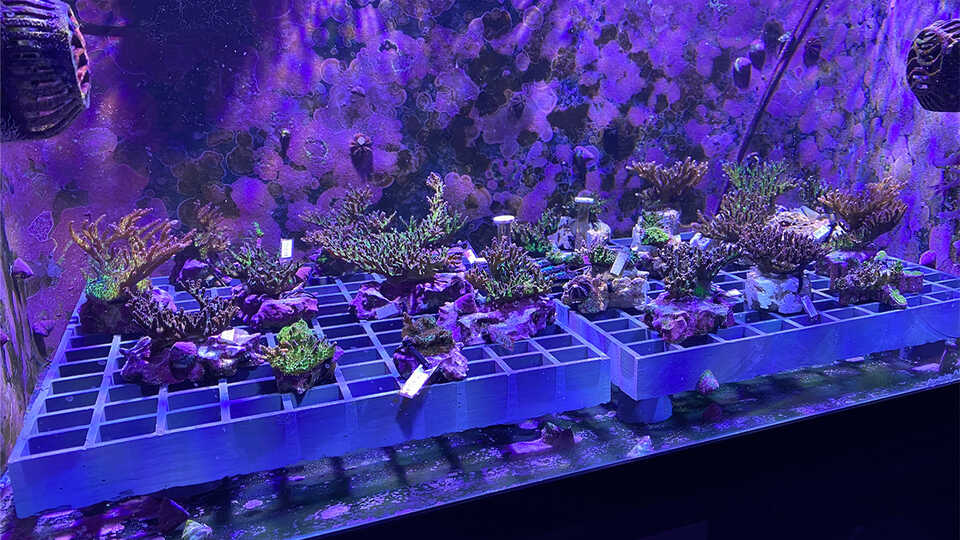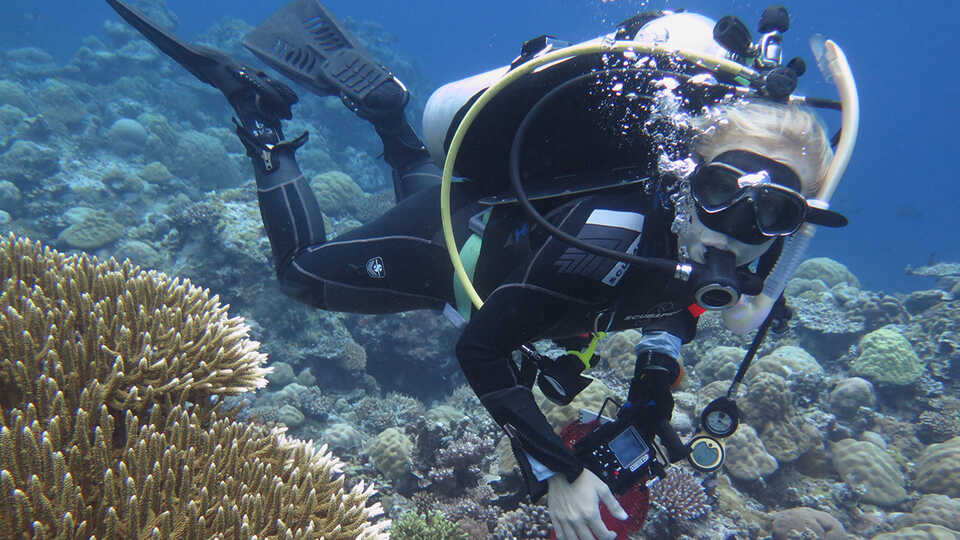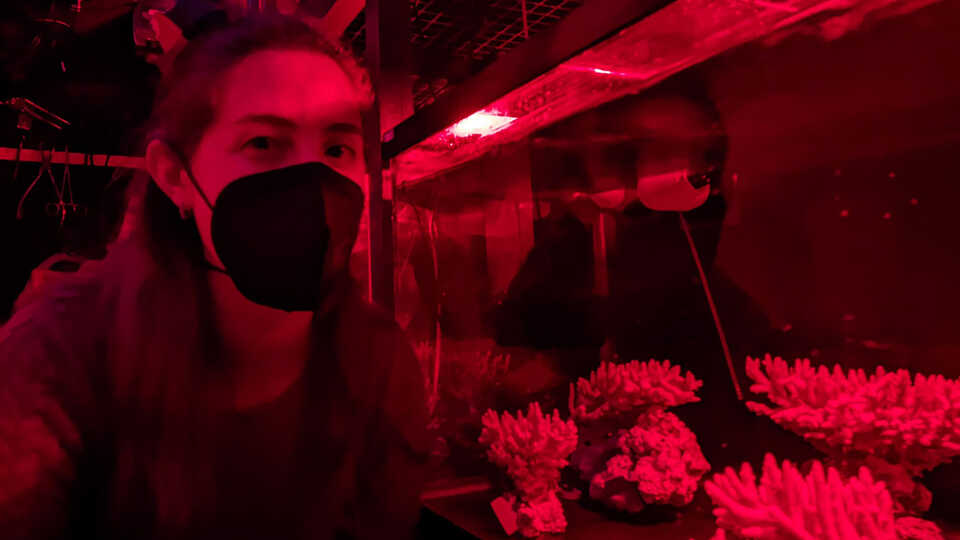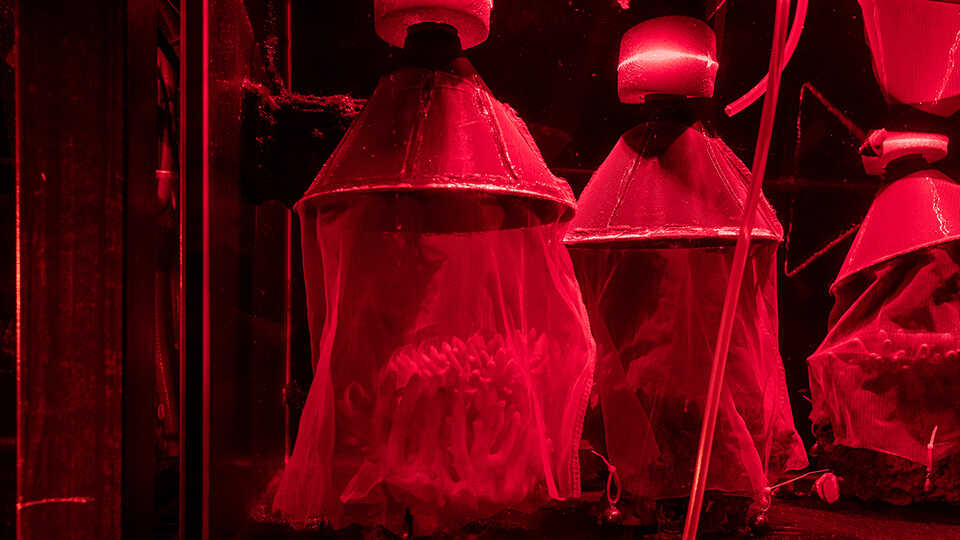The California Academy of Sciences is a renowned scientific and educational institution with a mission to regenerate the natural world through science, learning, and collaboration. Based in San Francisco’s Golden Gate Park, it is home to a world-class aquarium, planetarium, and natural history museum, as well as innovative programs in scientific research and environmental education—all under one living roof. Museum hours are 9:30 am – 5:00 pm Monday – Saturday, and 11:00 am – 5:00 pm on Sunday. Admission includes all exhibits, programs, and shows. For daily ticket prices, please visit www.calacademy.org or call (415) 379-8000 for more information.
Pedigree provides insights for maximizing genetic diversity and adaptability in corals bred for conservation
SAN FRANCISCO, CA (November 14, 2022) — Corals bred in public aquaria provide novel research opportunities and a healthy stock for outplanting into the wild, essential components of a thriving future for coral reef ecosystems, which support around 25% of all life in Earth’s oceans. But the long-term success of such efforts hinges in part on maintaining genetic diversity in aquarium-bred corals which leads to increased resilience to threats like ocean warming and acidification. In a study published today in Frontiers in Marine Science, a diverse team of Steinhart Aquarium biologists and researchers from the California Academy of Sciences' Coral Spawning Lab produce the first-ever pedigree, or ‘family tree’, for corals bred in an aquarium and provide a list of best practices to maintain genetic diversity in aquarium-bred corals.
“Genetic diversity is what enables species to adapt to the myriad threats resulting from climate change,” says Academy Curator Rebecca Albright, PhD, who founded the Coral Spawning Lab, one of only a handful of facilities on Earth capable of successfully breeding corals. Albright’s work is an integral part of the Academy’s Hope for Reefs initiative, which is aimed at halting the decline of coral reefs in this generation. “For facilities like ours at the Coral Spawning Lab, ensuring each generation of corals is diverse allows us to conduct more robust experiments, which is a critical element of better understanding how corals can thrive on our changing planet. For organizations that do outplantings, increased genetic diversity translates to a greater chance of survival in the wild.”
For the study, the researchers conducted genetic analyses on the parents and offspring from two generations of Acropora hyacinthus corals spawned in the Coral Spawning Lab in 2019 and 2020. Based on the similarities between the DNA of the corals, the researchers were able to determine the relationships between individuals, such as parenthood or siblinghood.
“Corals are broadcast spawners, meaning that multiple colonies release their sperm and eggs into the water simultaneously and there’s no way to immediately tell which coral parented which offspring,” says Academy coral researcher and study author Elora López-Nandam, PhD. “Surprisingly, we found that just two of the four colonies that spawned in 2019 parented 22 out of the 23 offspring that survived to their 2nd birthday. This leads to lots of new questions for us to explore how those two parents were so successful, the answers to which could help us better understand coral reproduction more broadly.”
“While successful coral spawning events are a testament to how closely we have been able to mimic natural oceanic conditions, inevitably there are environmental pressures in aquarium settings that will differ from those in the wild and might be selecting for certain traits in each generation of coral,” López-Nandam says. Therefore, in addition to relatedness, the researchers also sifted through all 450 million DNA base pairs—if an organism’s genome is a book, then base pairs are the individual letters—from each of the sampled corals to find genetic differences between successive generations.
In particular, the researchers found 887 points in the 450-million-letter long code that appear to be different in aquarium-bred corals when compared to those born in the wild.
“Many of the differences we found were in gene pathways related to symbiosis with photosynthetic algae, which is how many corals get most of their energy,” López-Nandam says. “We hope to conduct future research in the Coral Spawning Lab to determine what exactly from an aquarium setting is driving these differences and how those genetic variations impact the overall fitness or health of aquarium-bred corals.”
Just as it takes a village to raise a child, the study authors note that it takes a unique cadre of experts to raise corals for such a study: from couscous-sized gamete bundles to Aspirin-sized polyps to grapefruit-sized spawning adults.
“This sort of collaboration between aquarium biologists and scientific researchers is rare,” says Steinhart Aquarium biologist and study author Lisa Larkin. “There are very few places around the world where all of those experts are housed in the same building, working together towards a shared goal. The Academy is unique in that we can propel this kind of research forward while also making a major impact on coral conservation.”
Larkin and her colleagues in the Steinhart Aquarium spend months monitoring water quality and tracking the development of corals to ensure they are healthy enough to spawn each year.
“Corals can be quite finicky. It takes them a lot of energy to reproduce and if they are stressed, they’ll put that energy elsewhere,” Larkin says. “It takes months of detailed attention to get them to the point where they are ready and able to spawn.”
But, Larkin adds, the end result more than justifies the effort. “You take care of a coral for an entire year and when they finally spawn you know you’ve done a great job. And since each spawn results in new opportunities for research such as this that is applicable for coral conservation, the payoff is well worth it."
The Institute for Biodiversity Science and Sustainability at the California Academy of Sciences is at the forefront of efforts to regenerate the natural world through science, learning, and collaboration. Based in San Francisco, the Institute is home to more than 100 world-class scientists, state-of-the-art facilities, and nearly 46 million scientific specimens from around the world. The Institute also leverages the expertise and efforts of more than 100 international Associates and 450 distinguished Fellows. Through expeditions around the globe, investigations in the lab, and analysis of vast biological datasets, the Institute’s scientists work to understand the evolution and interconnectedness of organisms and ecosystems, the threats they face around the world, and the most effective strategies for ensuring they thrive into the future. Through deeply collaborative partnerships and innovative public engagement initiatives, they also guide critical conservation decisions worldwide, inspire and mentor the next generation of scientists, and foster responsible stewardship of our planet.
Press Contacts
If you are a journalist and would like to receive Academy press releases please contact press@calacademy.org.
Digital Assets
Hi-res and low-res image downloads are available for editorial use. Contact us at press@calacademy.org to request access.



